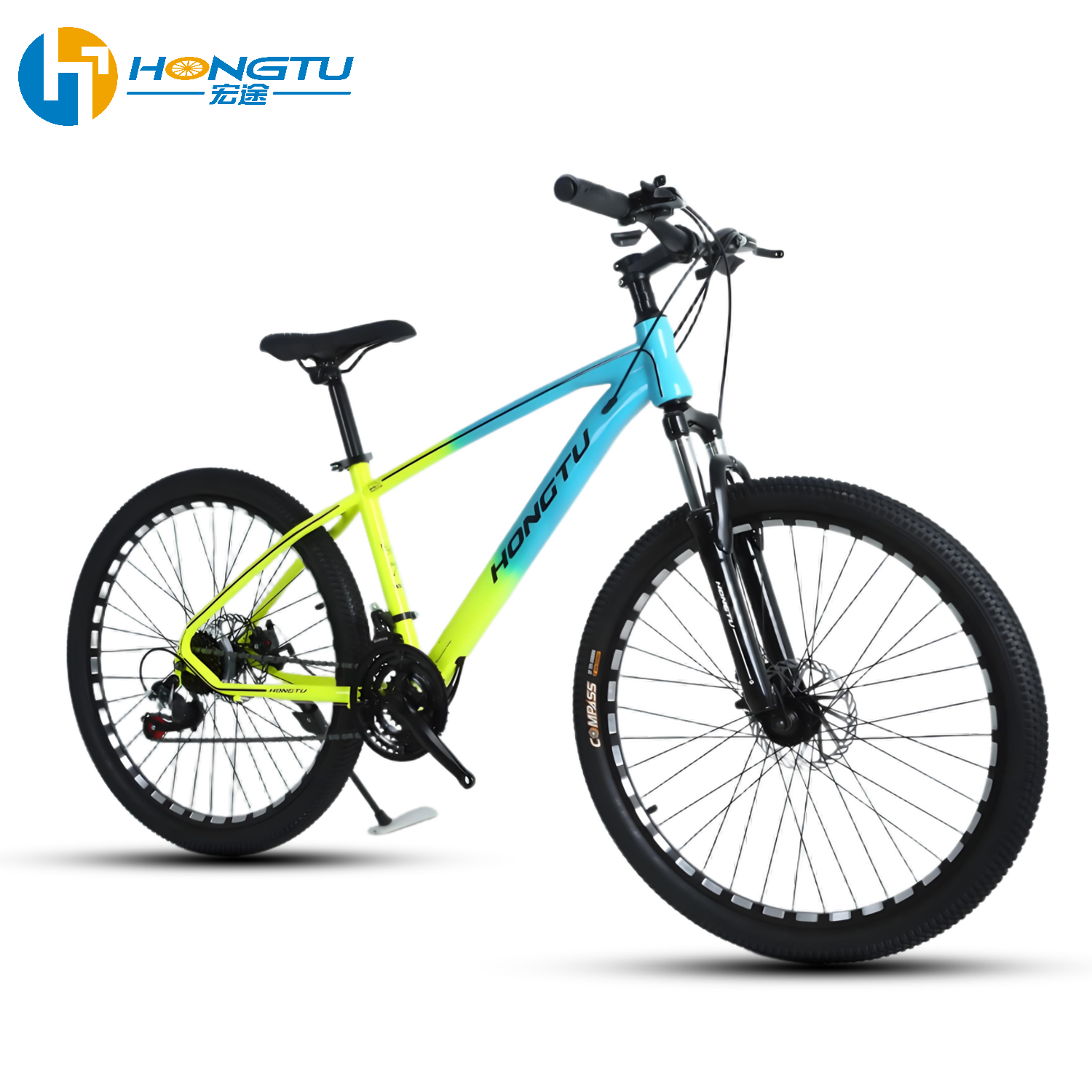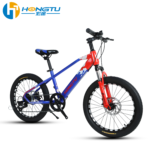Is A Mountain Bike Good For City Riding?

Understanding Mountain Bikes for Urban Use
Mountain bikes (MTBs) are predominantly engineered for off-road terrain, featuring robust frames, wide tires, and advanced suspension systems that facilitate navigation through rugged landscapes. However, their capabilities extend beyond just trail riding, making them a viable option for urban cycling. A primary consideration when evaluating the suitability of an MTB for city riding is the type of mountain bike, which typically falls into two categories: hardtail and full suspension.
Hardtail mountain bikes are characterized by a rigid rear end and a suspension fork at the front. This design offers improved efficiency during climbs and is generally lighter than full suspension models, making hardtails more suitable for commuting in urban environments. They provide adequate shock absorption for potholes and uneven surfaces while allowing for faster and more responsive handling on paved pathways. Hence, for city riders looking for a bike that can adeptly tackle both smooth roads and occasional gravel paths, a hardtail could be a fitting choice.
In contrast, full suspension mountain bikes come equipped with both front and rear suspension, enhancing comfort on technical trails but adding weight and complexity. While these bikes excel at absorbing shocks from rough terrains, their added bulk might hinder maneuverability in densely populated urban settings. Consequently, they may not be the best option for daily commuting where agility and speed are often desired.
Regardless of the type, mountain bikes display versatility in urban riding situations. They can handle various terrains, including cobblestones, gravel roads, and even occasional dirt paths usually found in parks. Their durable construction allows riders to confidently navigate through city landscapes, showcasing their adaptability despite being designed for off-road scenarios. This versatility highlights the potential benefits of using mountain bikes for urban mobility.
Efficiency and Comfort: Long-Distance Riding with Mountain Bikes
Mountain bikes are often characterized by their robust frames and wide tires, designed primarily for rugged terrains. When it comes to long-distance city riding, these features can present both advantages and disadvantages. One of the primary advantages of using a mountain bike in an urban environment is its durability and ability to handle various surfaces, from potholes to cobblestones. However, the weight and design of mountain bikes can also pose challenges, especially when riding long distances in a city framework where frequent stops are commonplace.
The heavier frame of a mountain bike may lead to increased fatigue during extended commutes. Coupled with this is the upright riding position that, while comfortable on rough terrain, may not be as efficient for long-distance rides on paved roads. Riders can find themselves exerting more energy to maintain speed, potentially diminishing the overall enjoyment of the ride. It is important to consider the nature of urban cycling, which often involves navigating through traffic and making abrupt stops at signals and crosswalks, characteristics that can be less suited for mountain bike geometry.
For those predominantly seeking longer commutes, touring bikes or hybrid models may be a more suitable option. These alternatives often incorporate a lightweight frame, narrower tires, and a more aerodynamic riding position, enhancing efficiency and comfort during extended rides. Moreover, these bikes typically come equipped with racks and fenders that further support commuting over long distances in varying weather conditions. Ultimately, while mountain bikes can be utilized for city riding, particularly for off-road routes or irregular paths, careful consideration must be given to the balance between exercise and comfort for longer urban traveling.
Safety and Performance: Comparing Mountain Bikes with Road Bikes
When it comes to urban mobility, choosing the right bike can significantly impact safety and performance. Both mountain bikes and road bikes have unique advantages that cater to different riding conditions and preferences. Mountain bikes are designed with a robust frame that can withstand the rigors of uneven terrains, making them particularly suited for navigating the unpredictable surfaces of city streets. The geometry of mountain bikes enhances stability, which is a crucial aspect when riding over potholes, gravel, or other road irregularities commonly found in urban areas.
One major advantage of mountain bikes is their shock-absorbing capabilities, thanks to the suspension system, which can provide a smoother ride over rough surfaces. This feature not only enhances comfort but also promotes safety by allowing the rider to maintain better control. Moreover, the thicker tires of mountain bikes offer increased traction, which can reduce the risk of slipping on wet or loose surfaces. As a result, riders often find themselves more secure and stable while navigating the challenging infrastructure of cities.
On the other hand, road bikes are designed for speed and efficiency on smooth surfaces, making them a favored option for those commuting longer distances. They typically feature lightweight frames and thinner tires, allowing cyclists to reach higher speeds with less effort. However, this design can be a disadvantage when it comes to handling rough urban roads. The lack of shock absorption on road bikes can lead to a harsher riding experience, making them less suitable for navigational challenges presented by urban environments.
Ultimately, the choice between a mountain bike and a road bike for city riding depends on individual needs and personal riding experiences. While mountain bikes excel in safety and adaptability on uneven terrains, road bikes can offer speed and efficiency for more consistent surfaces. Cyclists must evaluate their primary riding needs and the characteristics of their intended routes to determine which type is best suited for their urban mobility.
Making the Right Choice: Which Bike is Best for You?
Choosing the right bike for urban riding is crucial to ensure both comfort and efficiency. Several factors must be considered, notably the type of biking you plan to undertake, the terrains you will encounter, and your personal preferences. In the realm of city riding, three primary options stand out: mountain bikes, road bikes, and touring bikes. Each type offers distinct advantages that cater to various riding styles and needs.
Mountain bikes are well-suited for those who occasionally venture off the beaten path. With their robust frames and excellent suspension systems, they handle uneven terrain with ease. If urban riders seek dual-purpose functionality—to navigate city streets and explore trails—a mountain bike could be an excellent choice. However, they tend to be heavier than other types, which could affect speed and efficiency during daily commutes.
On the other hand, road bikes prioritize speed and efficiency on paved surfaces. Their lightweight frames and narrow tires make them ideal for commuters who traverse extensive city distances regularly. If your primary intention is commuting, a road bike will likely provide a swift and nimble solution. Conversely, for those who travel longer distances with gear, a touring bike may prove beneficial, offering additional stability and comfort over extended rides.
In addition to bike type, riders should consider practical safety tips while navigating urban environments. Wearing a helmet, utilizing bike lanes where available, and maintaining awareness of traffic patterns are essential for ensuring a secure riding experience. Furthermore, regular bike maintenance, including tire pressure checks and brake functionality, plays a critical role in enhancing safety and performance. Prioritizing these aspects will not only improve your riding experience but also contribute to safer urban mobility.
Ultimately, the best bike for urban riding will depend on the individual’s specific needs and riding habits, making thorough consideration of each option essential for an informed choice.


